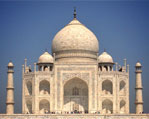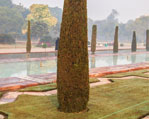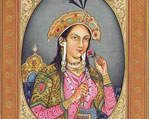The Taj Mahal
The history of the Taj Mahal is surprisingly recent. The Mughal emperor Shah Jahan commissioned it in 1632 after the death of his favorite wife Mumtaz Mahal. Construction on the main part was finished in 1648, and the outer courtyard and its cloisters were completed in 1653. Ustad-Ahmad Lahori was the chief architect, and he hired stone-cutters, masons, dome builders, carvers, painters and other artisans from all over the empire as well as Iran and Central Asia. UNESCO designated it a World Heritage Site in 1983 for “being the jewel of Muslim art in India and one of the universally admired masterpieces of the world’s heritage.”
The mausoleum is a complex that spreads across 55.5 acres. In addition to the main tomb, it includes subsidiary tombs, gardens, fountains, a mosque, and even a small town called Taj Ganji. The entire complex was designed to be a representation of Mumatz’s home in paradise.
Taj Mahal Facts

The Taj Mahal contains a fascinating history well worth learning. Did you know that Shah Jahan planned to build a second Taj Mahal? How long did it take to build? Find out these facts and more simply by a click.
History

One of the new 7 wonders of the world and a symbol of India’s rich history, the Taj Mahal is well worth seeing and holds a fascinating history within its walls
Taj Mahal Gardens

The gardens of the Taj Mahal cover 300 square meters and arranged in symmetrical patterns. The trees are either cyprus -- which symbolizes death -- or fruit-bearing -- which symbolizes life. They are well worth seeing.
Mumtaz Mahal

Mumtaz Mahal, meaning “the chosen one of the palace,” is the whole reason for the Taj Mahal, as it was built to be her tomb when she died in 1631. Betrothed to Shah Jahan at 14, she married him in 1612 .